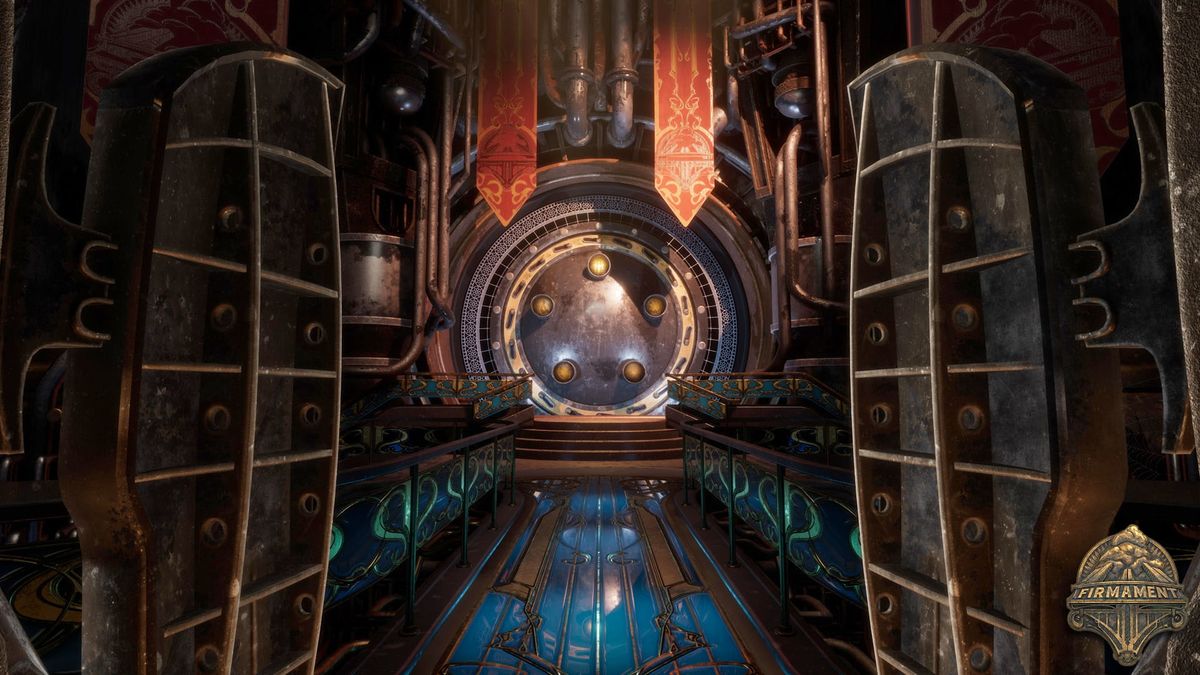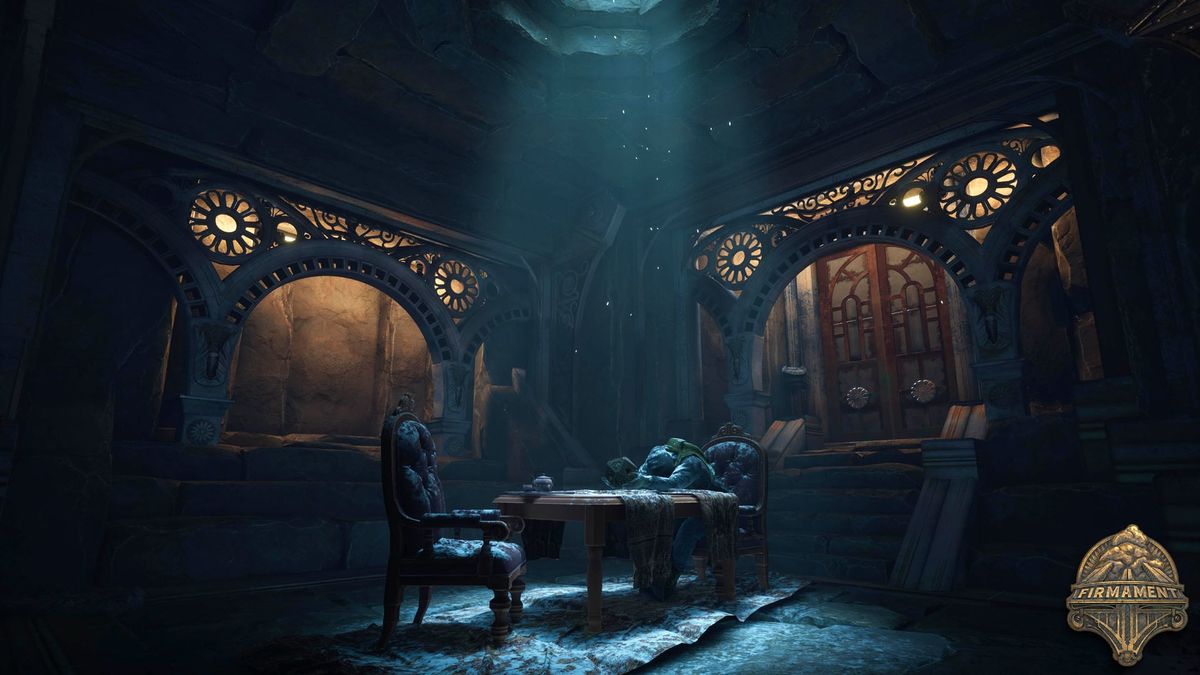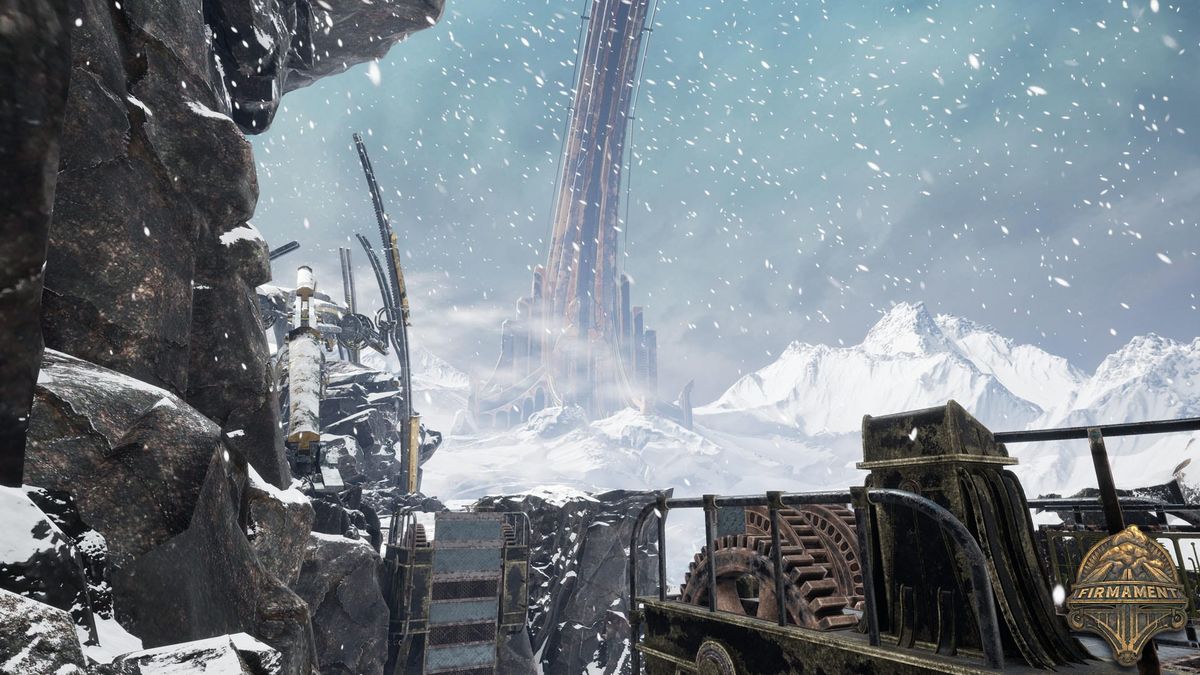Game On: When Kickstarter goes right – and when it doesn’t
Successfully crowdfunded through Kickstarter in 2018, “Firmament” is Cyan Inc.’s most ambitious project yet, set to feature a narrative-driven steampunk world filled with puzzles to be solved using immersive VR controls. The game’s current release window is late 2022. (Cyan Inc.)
Since its inception in 2009, Kickstarter has proven to be a great tool for creative types to get projects off the ground when their existing income is insufficient. Given the large quantity of resources and wide variety of talent typically needed to create a video game, the platform has proven to be especially helpful for independent game developers.
Of course, with almost unconditional funding and no publisher to oversee development, Kickstarter is not risk-free for investors. Plans can change substantially during development, some projects are too lofty for their own good, and others are a scam from the start.
“Darkest Dungeon,” one of my favorite games of all time, made it to the finish line thanks to Kickstarter. Red Hook Studios, a five-person indie team, had managed to keep development going for nine months out-of-pocket before taking to the internet in 2014 to beg for help. Their funding target was $75,000 – they amassed $313,000. The game went on to produce several expansions.
Their Kickstarter pitch was thorough, with plenty of authentic in-game footage on display. It wasn’t polished, but the game already looked practically complete at the time. The Kickstarter funds and subsequent commercial success of the game allowed Red Hook Studios to grow their team to 20 employees and be completely independent in developing “Darkest Dungeon II,” which will launch in early access on the Epic Games Store in Q3 2021 – very soon.
“Darkest Dungeon” is a great time, but it’s clearly a small-scale indie effort. Other projects, like the notorious “Star Citizen,” are substantially more ambitious. Cloud Imperium Games’ 2012 pitch was bold, claiming “traditional publishers don’t believe in space sims, and venture capitalists only want to back mobile or social gaming startups.”
The devs didn’t beat around the bush, with their crosshairs planted squarely at the likes of “Eve Online” by promising no subscription fees and zero “pay-to-win” elements. Throughout their bombastic pitch, they proudly reminded would-be backers that the mastermind behind “Star Citizen” is Chris Roberts of “Wing Commander” fame.
Long story short – their brazen tactics worked, with $15 million pledged within the first year. Funding from backers has exceeded $300 million as of June 2020. The game’s initial release window was 2014 – it’s now 2021, and the game still isn’t finished.
The problem is that Cloud Imperium Games is adamant that “Star Citizen” needs to mimic a AAA game experience – cutting-edge graphics, big-budget production, the works. Even under the conditional support and constant watch of major game publishers, modern AAA games often take around half a decade to create from start to finish – assuming it’s a fresh experience and not just another chapter of “Assassin’s Creed” or “Battlefield,” for instance.
In the case of “Star Citizen,” employees aren’t working under the constant threat of a publisher pulling the plug on their project. This gives them a less-stressful working environment and a greater degree of artistic freedom, but it also enables them to develop the game at a snail’s pace with few repercussions.
Many have taken to calling the game “vaporware,” a term for products that are never finished but never formally canceled. Backers can play an early alpha version for the entry cost of $45, but it’s a rough build, and only a handful of the promised features are currently available.
Although the game is stuck in development hell, “Star Citizen” has proven that crowdfunding can be a viable source of capital even for large-scale projects. Despite being established developers, Spokane’s own Cyan Inc. took to Kickstarter in 2013 to fund “Obduction,” a spiritual successor to their own renowned “Myst” series.
Cyan set the goalpost at $1.1 million, and backers pledged $1.3 million within weeks. They also used the platform to release “Myst 25th Anniversary Collection,” with the funding goal of $250,000 – ultimately, $2.8 million was pledged.
On a quick side note, the biography section of both projects reads “Cyan is located on the northern outskirts of Spokane, Washington, about 119 trillion miles from the nearest habitable planet.” Cheeky!
In 2018, they took to Kickstarter once again to announce “Firmament,” an entirely new Cyan world. The project was quickly backed and a July 2020 release date was advertised. When the month came around, however, Cyan pushed the release all the way to late 2022.
Game delays are common but often make would-be players uneasy – doubly so when the gamers effectively paid for the game years in advance. Unlike Cloud Imperium Games, though, Cyan has released completed products on dozens of occasions for more than three decades. There’s no reason to believe “Firmament” is vaporware like “Star Citizen.”
With a brand-new steampunk world, an AI companion, comprehensive VR controls and regular controller support, “Firmament” is Cyan’s biggest undertaking yet – setbacks are understandable, and I look forward to seeing the final product when it’s ready.


